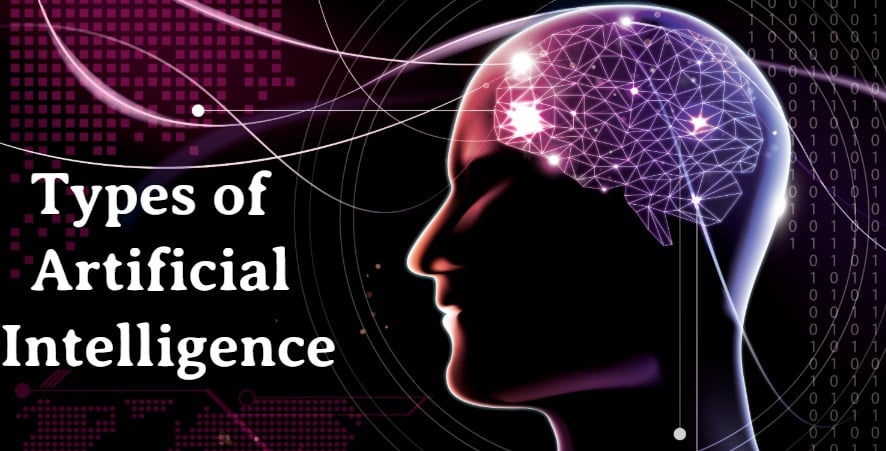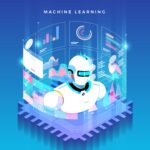
What is Artificial Intelligence (AI)?
Artificial Intelligence (AI) is a method of making a computer, a computer-controlled robot, or a software think intelligently like the human mind. AI is accomplished by studying the patterns of the human brain and by analyzing the cognitive process. The outcome of these studies develops intelligent software and systems.
History of Artificial Intelligence (AI):
Let’s see the timeline of the past six decades of how AI evolved from its inception.
1956 – John McCarthy coined the term ‘artificial intelligence’ and had the first AI conference.
1969 – Shakey was the first general-purpose mobile robot built. It is now able to do things with a purpose vs. just a list of instructions.
1997 – Supercomputer ‘Deep Blue’ was designed, and it defeated the world champion chess player in a match. It was a massive milestone by IBM to create this large computer.
2002 – The first commercially successful robotic vacuum cleaner was created.
2005 – 2019 – Today, we have speech recognition, robotic process automation (RPA), a dancing robot, smart homes, and other innovations make their debut.
2020 – Baidu releases the LinearFold AI algorithm to medical and scientific and medical teams developing a vaccine during the early stages of the SARS-CoV-2 (COVID-19) pandemic. The algorithm can predict the RNA sequence of the virus in only 27 seconds, which is 120 times faster than other methods.
Father of artificial intelligence
John McCarthy (September 4, 1927 – October 24, 2011) an American computer scientist and cognitive scientist, widely recognized as the “Father of Artificial Intelligence” due to his astounding contribution in the field of Computer Science and AI
The Four Types of Artificial Intelligence (AI):

1. Reactive Machines
This kind of AI is purely reactive and does not have the ability to form ‘memories’ or use ‘past experiences’ to make decisions. These machines are designed to perform specific tasks. For example, programmable coffeemakers or washing machines are designed to perform specific functions, but they do not have memory.
Example: A famous example of a reactive machine is Deep Blue, which was designed by IBM in the 1990’s as a chess-playing supercomputer and defeated international grandmaster Gary Kasparov in a game.
Another example of a game-playing reactive machine is Google’s AlphaGo. AlphaGo is also incapable of evaluating future moves but relies on its own neural network to evaluate developments of the present game, giving it an edge over Deep Blue in a more complex game. AlphaGo also bested world-class competitors of the game, defeating champion Go player Lee Sedol in 2016.
2. Limited Memory AI
This kind of AI uses past experiences and the present data to make a decision. Limited memory means that the machines are not coming up with new ideas. They have a built-in program running the memory. Reprogramming is done to make changes in such machines. Self-driving cars are examples of limited memory AI.
Example: Self-driving cars are Limited Memory AI, that uses the data collected in the recent past to make immediate decisions. For example, self-driving cars use sensors to identify civilians crossing the road, steep roads, traffic signals and so on to make better driving decisions. This helps to prevent any future accidents.
3. Theory of Mind
These AI machines can socialize and understand human emotions and will have the ability to cognitively understand somebody based on the environment, their facial features, etc. Machines with such abilities have not been developed yet. There is a lot of research happening with this type of AI.
Example: Autonomous cars, for example, will need to be able to infer the mental states of human drivers and pedestrians to predict their behavior. As AI becomes more powerful and pervasive its ability to infer human goals, desires, and intentions, even in ambiguous or new situations, will become ever more important.
4. Self-Awareness
This is the future of AI. These machines will be super-intelligent, sentient and conscious. They are able to react very much like a human being, although they are likely to have their own features.
Example: A robot that is considered to be self-aware by some is a robot ‘arm’ made by a group from Columbia University. The group created a robot that learns what it is by itself; the robot has no prior knowledge, but after a day of ‘babbling’, the robot creates a self-simulation of itself.
Goals of AI:
- Logical Reasoning
- Knowledge Representation
- Planning and Navigation
- Natural Language Processing
- Perception
- Emergent Intelligence
Artificial Intelligence Technologies:

Machine learning
Automates analytical model building. It uses methods from neural networks, statistics, operations research to find hidden insights in data without explicitly being programmed for where to look.
Neural network
Is a type of machine learning that is made up of interconnected units (like neurons), that processes information by responding to external inputs, relaying information between each unit. The process requires multiple passes at the data to find connections and derive meaning from undefined data.
Deep learning
It uses huge neural networks with many layers of processing units, taking advantage of advances in computing power and improved training techniques to learn complex patterns in large amounts of data. Common applications include image and speech recognition.
Cognitive computing
It is a subfield of AI that strives for a natural, human-like interaction with machines. Using AI and cognitive computing, the ultimate goal is for a machine to simulate human processes through the ability to interpret images and speech – and then speak coherently in response.
Computer vision
It relies on pattern recognition and deep learning to recognize what’s in a picture or video. When machines can process, analyze and understand images, they can capture images or videos in real time and interpret their surroundings.
Natural language processing (NLP)
Is the ability of computers to analyze, understand and generate human language, including speech. The next stage of NLP is natural language interaction, which allows humans to communicate with computers using normal, everyday language to perform tasks.
Graphical processing units
Are key to AI because they provide the heavy compute power that’s required for iterative processing. In fact, Training neural networks require big data plus compute power. The Internet of Things generates massive amounts of data from connected devices, most of it unanalyzed. Automating models with AI will allow us to use more of it.
What are the Advantages and Disadvantages of AI?
Artificial intelligence has its pluses and minuses, much like any other concept or innovation.
Advantages of AI:
- It reduces human error
- It never sleeps, so it’s available 24×7
- It never gets bored, so it easily handles repetitive tasks
- It’s fast
Disadvantages of AI:
- It’s costly to implement
- It can’t duplicate human creativity
- It will definitely replace some jobs, leading to unemployment
- People can become overly reliant on it
Applications of Artificial Intelligence:

- Machines and computers affect how we live and work. Top companies are continually rolling out revolutionary changes to how we interact with machine-learning technology.
- DeepMind Technologies, a British artificial intelligence company, was acquired by Google in 2014. The company created a Neural Turing Machine, allowing computers to mimic the short-term memory of the human brain.
- Google’s driverless cars and Tesla’s Autopilot features are the introductions of AI into the automotive sector. Elon Musk, CEO of Tesla Motors, has suggested via Twitter that Teslas will have the ability to predict the destination that their owners want to go via learning their pattern or behavior via AI.
- Furthermore, Watson, a question-answering computer system developed by IBM, is designed for use in the medical field. Watson suggests various kinds of treatment for patients based on their medical history and has proven to be very useful.
Some of the more common commercial business uses of AI are:
1. Banking Fraud Detection
From extensive data consisting of fraudulent and non-fraudulent transactions, the AI learns to predict if a new transaction is fraudulent or not.
2. Online Customer Support
AI is now automating most of the online customer support and voice messaging systems.
3. Cyber Security
Using machine learning algorithms and ample sample data, AI can be used to detect anomalies and adapt and respond to threats.
4. Virtual Assistants
Siri, Cortana, Alexa, and Google now use voice recognition to follow the user’s commands. They collect information, interpret what is being asked, and supply the answer via fetched data. These virtual assistants gradually improve and personalize solutions based on user preferences.
Artificial Intelligence FAQ
Who coined the term artificial intelligence?
John McCarthy, a professor emeritus of computer science at Stanford, the man who coined the term “artificial intelligence” and subsequently went on to define the field for more than five decades
What is the artificial intelligence?
Artificial Intelligence (AI) is a method of making a computer, a computer-controlled robot, or a software think intelligently like the human mind
What are the 4 types of AI?
Reactive, Limited memory, Theory of mind, and Self-aware
Who is father of AI?
John McCarthy is father of AI
When artificial intelligence started?
1956
LIKE WHAT YOU’RE READING?
CHECK OUT SOME OF OUR OTHER GREAT CONTENT HERE
- HOW TO START A CAREER IN ARTIFICIAL INTELLIGENCE?
- WHAT IS MACHINE LEARNING?
- DATA SCIENCE – THE ULTIMATE GUIDE
- HOW AI IS USED IN DIGITAL MARKETING?
- TOP 5 BEST SEO TOOLS(2022)



14 Comments